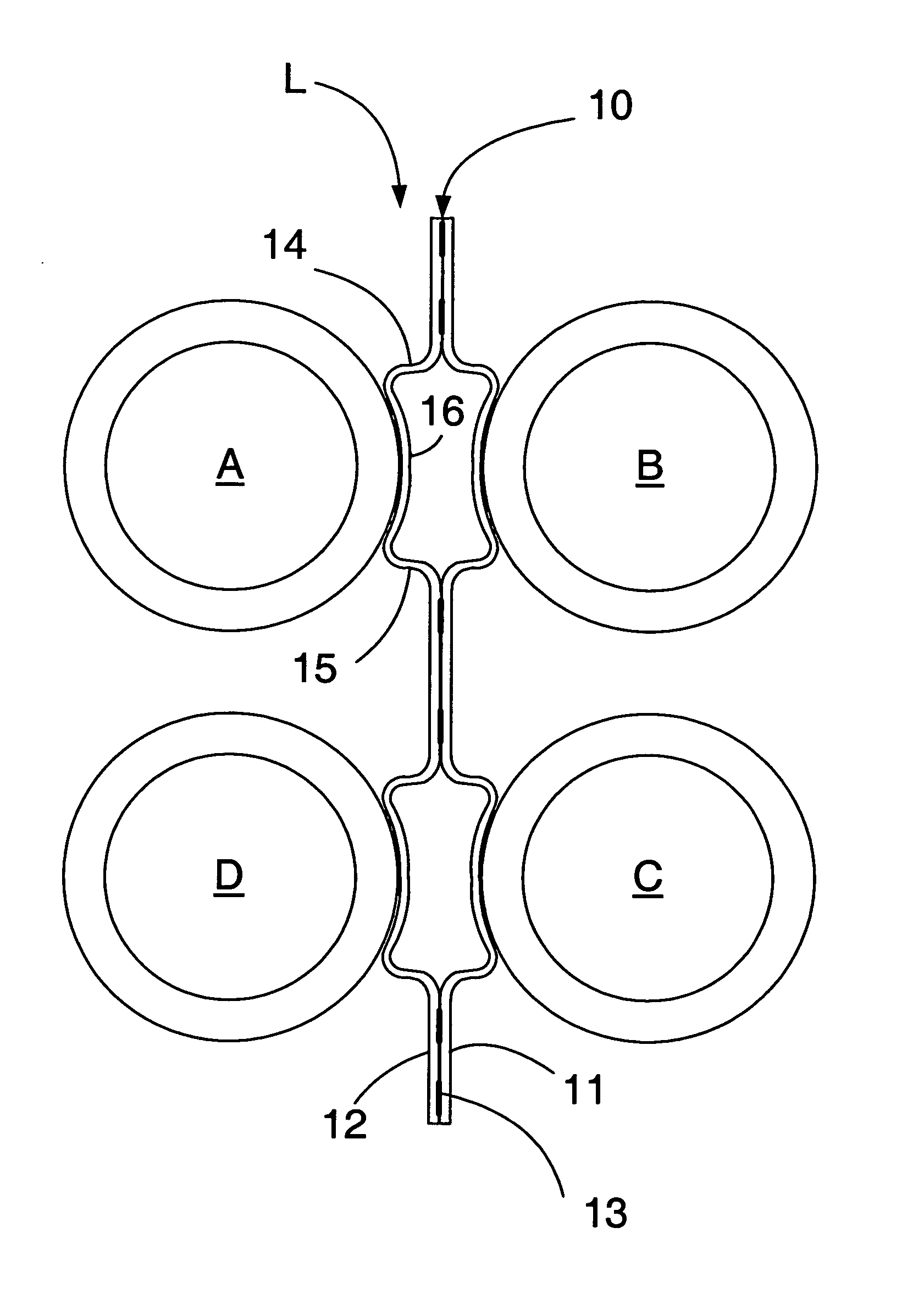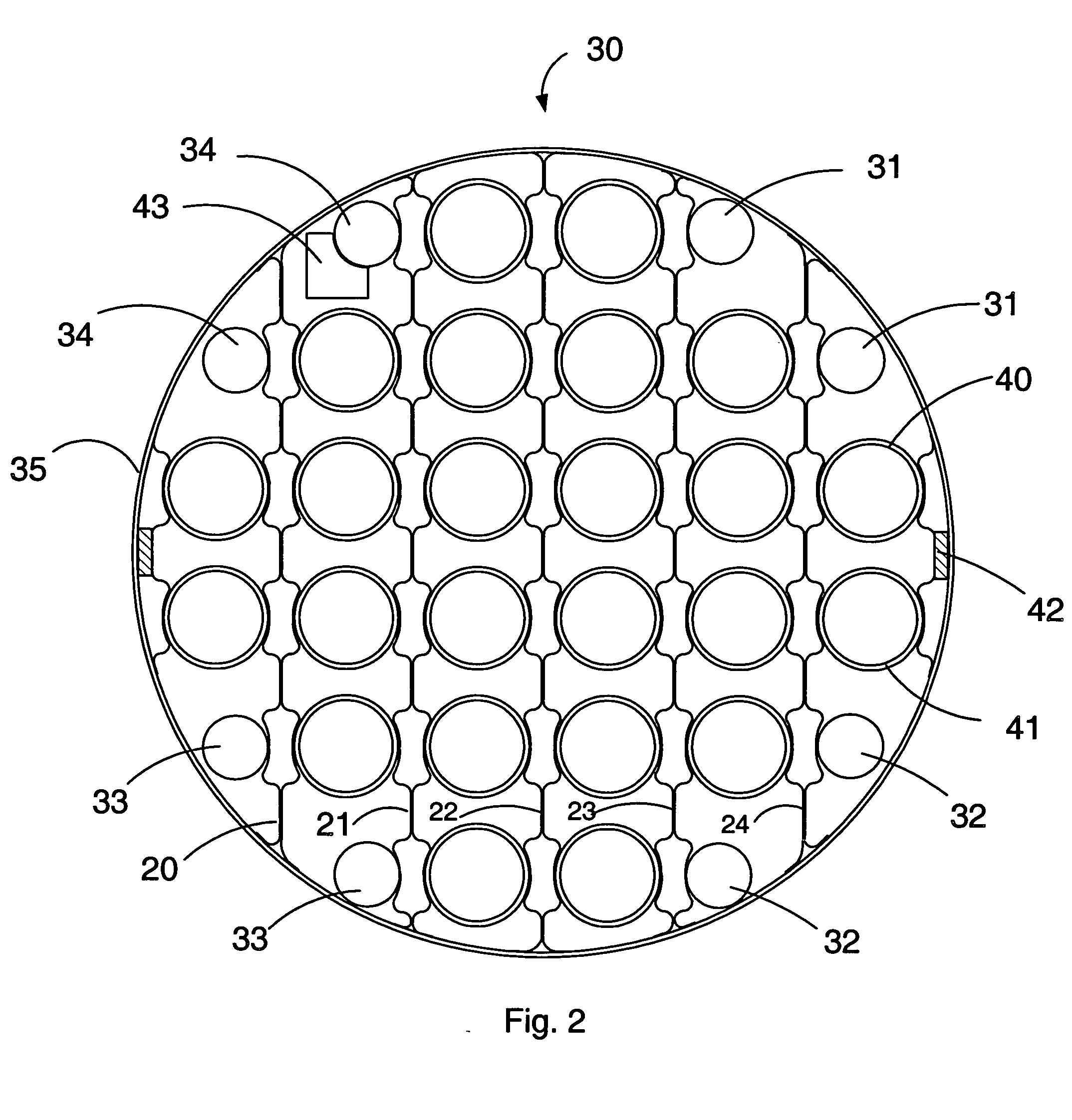Anti-vibration tube support
a tube support and anti-vibration technology, applied in the direction of indirect heat exchangers, safety devices for heat exchange apparatuses, lighting and heating apparatuses, etc., can solve the problems that many of the known types of tube supports do not lend themselves to this simple, and achieve the effect of reducing the possibility of tube damag
- Summary
- Abstract
- Description
- Claims
- Application Information
AI Technical Summary
Benefits of technology
Problems solved by technology
Method used
Image
Examples
Embodiment Construction
[0019] The tube support or tube stake of the present invention is arranged to provide direct support for tubes which are adjacent to one another but on opposite sides of a tube lane. The tube support may be inserted between the tubes in the tube bundle along a tube lane between adjacent tube rows. Where the construction of the exchanger permits, the support may be made sufficiently long to extend from one side of the tube bundle to the other to provide support for the tubes across the entire width of the bundle; in this case, the length of the tube supports will vary according to the length of the tube lanes across the bundle. In many cases, however, the location of pass lanes in the bundle will create discontinuities in the lanes so that it will not be possible to insert the supports all the way across the bundle. In such cases, it may be possible to insert the supports into the bundle from different sides of the bundle at different locations along the length of the bundle so as to...
PUM
 Login to View More
Login to View More Abstract
Description
Claims
Application Information
 Login to View More
Login to View More - R&D
- Intellectual Property
- Life Sciences
- Materials
- Tech Scout
- Unparalleled Data Quality
- Higher Quality Content
- 60% Fewer Hallucinations
Browse by: Latest US Patents, China's latest patents, Technical Efficacy Thesaurus, Application Domain, Technology Topic, Popular Technical Reports.
© 2025 PatSnap. All rights reserved.Legal|Privacy policy|Modern Slavery Act Transparency Statement|Sitemap|About US| Contact US: help@patsnap.com



